Located in the heart of the Himalayas, Bhutan is a land of stunning landscapes, vibrant culture, and peaceful spirituality. Bhutan best time to travel. Known as the “Land of the Thunder Dragon,” Bhutan offers travelers a unique experience with its pristine environment, ancient monasteries, and vibrant festivals. Whether you’re an adventure enthusiast seeking high-altitude treks, a culture lover eager to witness traditional festivals, or simply someone looking to escape the hustle and bustle of modern life, Bhutan best time to travel offers something for everyone.
Best Time to Visit Bhutan for Different Experiences
Bhutan best time to travel offers a wide range of experiences, from its vibrant cultural festivals to its breathtaking treks and serene landscapes. The best time to visit largely depends on the type of experience you are seeking. Whether you’re interested in immersing yourself in Bhutan’s rich culture, trekking through the Himalayas, or simply enjoying its tranquil beauty, each season offers unique opportunities.
Best Time for Festivals and Cultural Events
Bhutan best time to travel is famous for its lively and colorful festivals, known as Tsechus, which are celebrated across the country. These festivals are a great way to immerse yourself in Bhutanese culture and witness traditional performances, dances, and rituals.
- Spring (April to June): Bhutan best time to travel This is a prime time for cultural festivals. The Paro Tsechu, held in April, is one of Bhutan’s most important and spectacular festivals, featuring traditional mask dances and performances that offer a deep insight into Bhutanese history and religion. Similarly, the Thimphu Tsechu takes place in September, offering another chance to witness Bhutanese cultural extravagance.
- Autumn (October to December): This season is also excellent for cultural events. The Punakha Drubchen and Tsechu, which take place in February or March, are well-known for their spectacular processions and rituals, providing a rich cultural experience.
Ideal Seasons for Trekking and Adventure
Bhutan best time to travel is a trekker’s haven, featuring towering mountain ranges, lush forests, and untouched valleys. However, the best time to embark on treks in Bhutan largely depends on the weather and trail conditions.
- Autumn (October to December): Autumn is undoubtedly the best time for trekking in Bhutan. The weather is dry, clear, and cool, with minimal rainfall. This makes it ideal for popular treks like the Druk Path Trek and the Snowman Trek. The skies are pristine, providing stunning views of the Himalayas and the surrounding scenery.
- Spring (April to June): Bhutan best time to travel Spring is another excellent time for trekking, especially if you prefer milder temperatures and colorful scenery. The weather is pleasant, with blooming flowers like rhododendrons decorating the trails, making it a visually stunning time for outdoor activities.
- Monthly Breakdown of Bhutan’s Best Travel Times
Bhutan best time to travel varies greatly depending on the time of year and the region you visit. To help you plan the best trip based on your interests, here’s a monthly breakdown of Bhutan’s weather, highlighting the best travel times for different activities.
January to March: Winter Charm
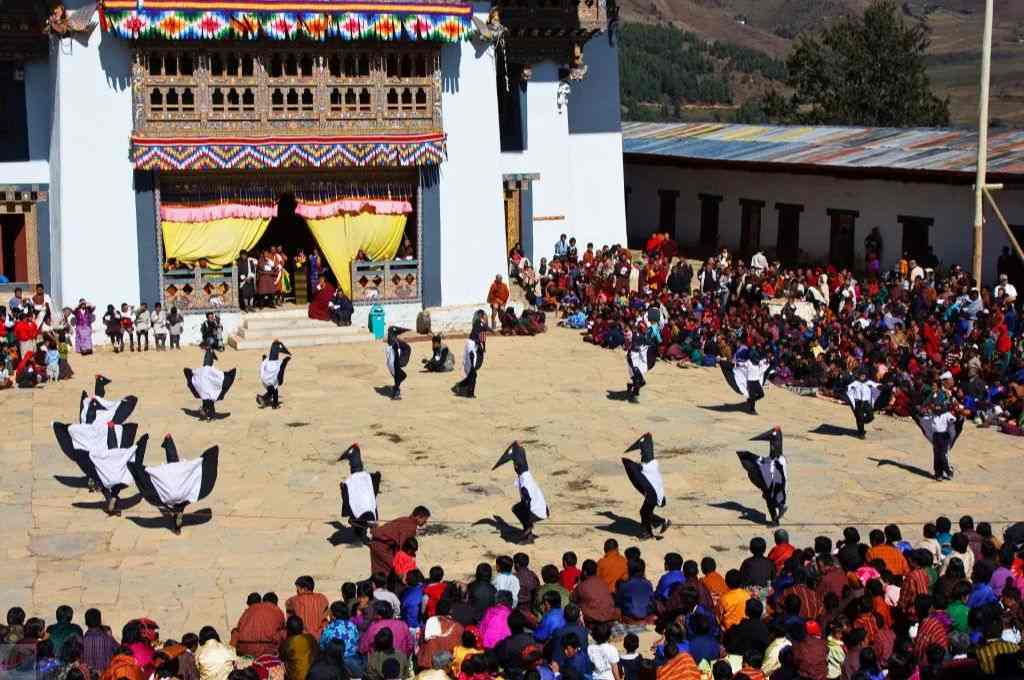
- Weather: Bhutan experiences its coldest months during winter, with temperatures dropping significantly, especially in higher altitudes. In the southern parts, the weather remains mild, but in the central and northern regions, you can expect snow and chilly conditions.
- Best For: If you enjoy solitude and don’t mind the cold, winter offers a peaceful experience with fewer tourists. The snow-covered Himalayan peaks are stunning, and the serene atmosphere is perfect for spiritual retreats and quiet reflection.
- Festivals: Though winter lacks major festivals, it is the time for the Black-Necked Crane Festival in the Phobjikha Valley, Bhutan best time to travel where you can witness the migration of these beautiful birds.
- Things to Consider: Some trekking routes, particularly those in the higher altitudes, might be difficult due to heavy snowfall.
April to June: Spring Awakening
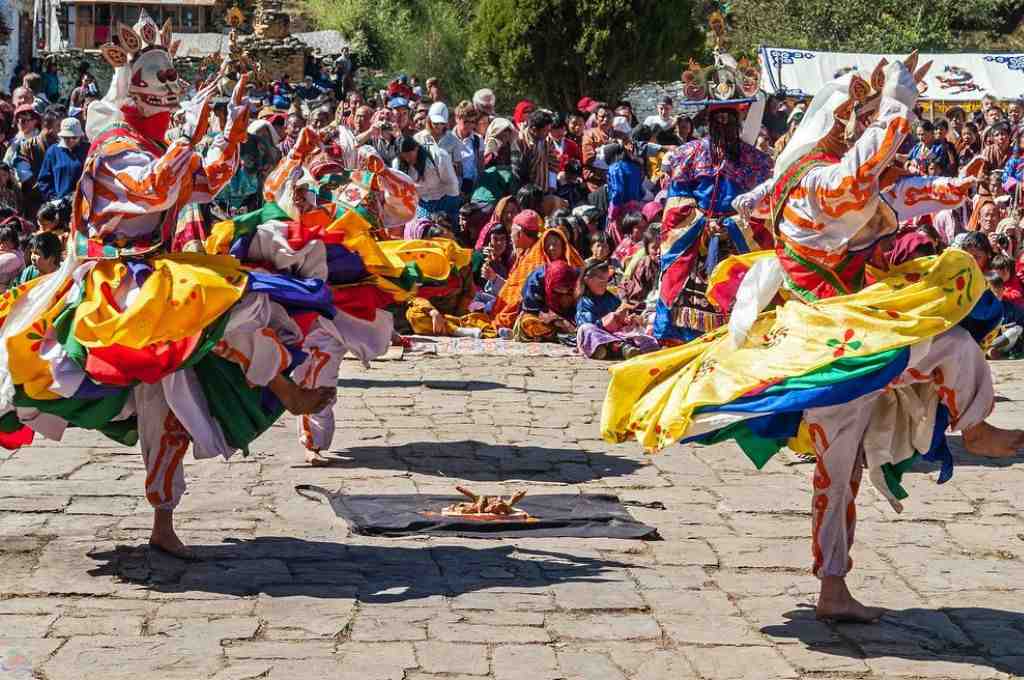
- Weather: Spring brings warmer temperatures and clearer skies, making it one of the most pleasant Bhutan best time to travel. The landscapes come alive with blooming flowers, including vibrant rhododendrons, and the overall weather is comfortable, perfect for outdoor activities.
- Best For: Spring is the best season for trekking, as the trails are adorned with flowers, and the temperatures are ideal for long hikes. It’s also a perfect time for birdwatching, with many species in full activity.
- Festivals: Spring is the festival season in Bhutan best time to travel. The Paro Tsechu in April is one of Bhutan’s most important cultural events, featuring traditional dances, music, and rituals. The Thimphu Tsechu in June also attracts many visitors.
- Things to Consider: While the weather is generally favorable, occasional rain showers can happen as the monsoon season approaches.
July to September: The Monsoon Season
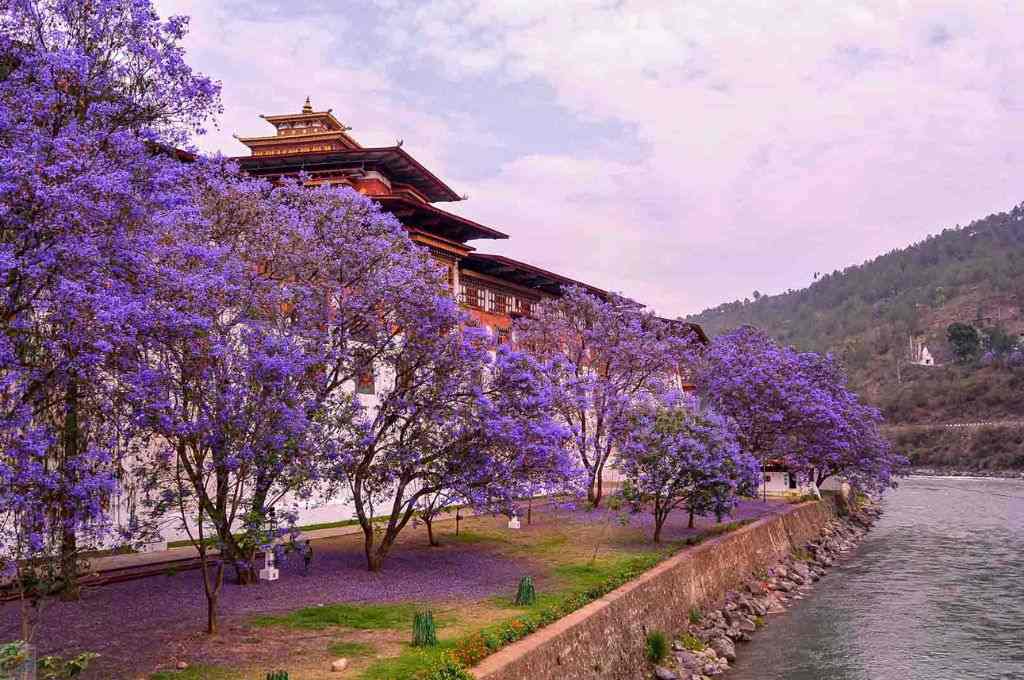
- Weather: Bhutan best time to travel monsoon season brings intense rainfall, especially in the southern regions, along with high humidity and the potential for landslides in the mountainous areas. Temperatures are generally warm but not extreme, and the rain leads to lush, green landscapes.
- Best For: This is not an ideal time for trekking, as trails may be slippery and difficult to navigate. However, it’s a great time for nature lovers who want to experience Bhutan’s lush vegetation and wildlife in full bloom.
- Festivals: While there are no major festivals during this time, the Bumthang Summer Festival may take place, offering a less crowded but cultural experience.
- Things to Consider: Trekking is not recommended due to the muddy and slippery conditions. However, this is the ideal time for photographers seeking to capture the misty, rain-drenched beauty of Bhutan.
October to December: Autumn Beauty
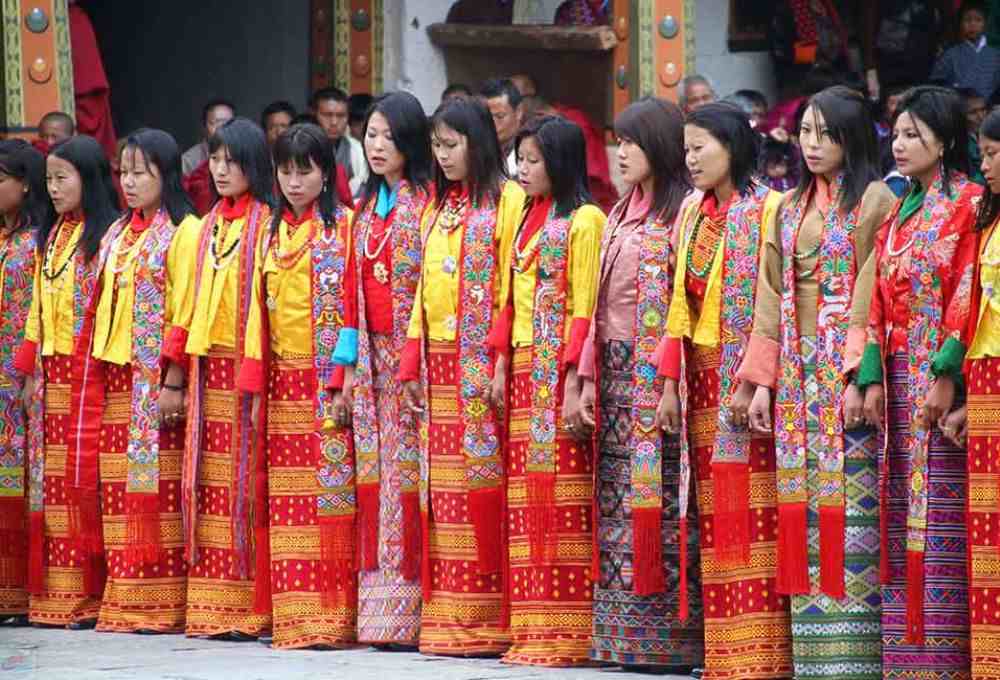
- Weather: Autumn is regarded as the perfect Bhutan best time to travel. The monsoon rains have subsided, and the weather is dry and clear, with temperatures ranging from cool to mild, especially in the central and northern regions. This season offers perfect trekking conditions with stunning views of the Himalayas.
- Best For: Autumn is perfect for outdoor activities, especially trekking. Trails are dry, and the clear skies provide excellent visibility for mountain views. This is also the best time to visit Bhutan’s famous cultural festivals, such as the Punakha Drubchen and Punakha Tsechu, held in October or November.
- Festivals: The Thimphu Tsechu and Punakha Tsechu are both held during this season, making it a great time for cultural exploration.
- Things to Consider: As autumn is the peak travel season, it can get crowded, especially around the major cultural festivals. Be sure to book your accommodations in advance.
Bhutan’s Seasonal Highlights
Bhutan best time to travel diverse climate, influenced by its geography and altitude, creates a unique experience for travelers throughout the year. Each season offers distinct highlights, making it possible to find something special no matter when you visit. From vibrant festivals and lush landscapes to serene winter landscapes and clear skies, Bhutan has something to offer every traveler in each season.
Spring (April to June): Best for Festivals and Vibrant Landscapes
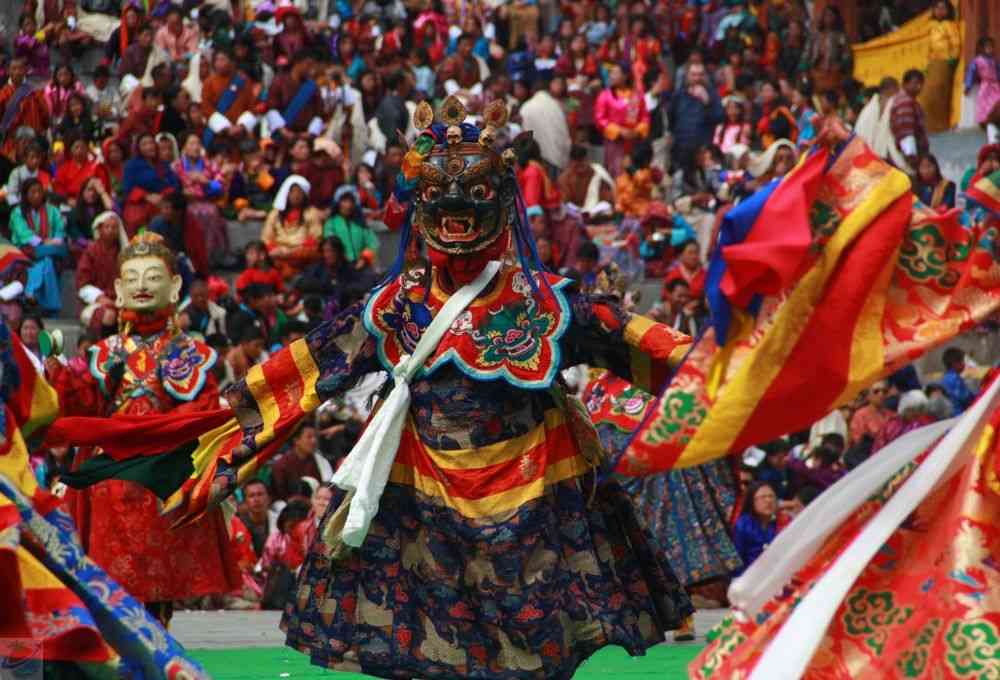
- Weather: Spring is one of the most delightful seasons to Bhutan best time to travel, with mild temperatures and clear skies. The air is fresh, and the landscape comes alive with blooming flowers, including rhododendrons, magnolias, and cherry blossoms. The temperatures are warm enough to enjoy outdoor activities, but not too hot.
Highlights:
- Festivals: Spring is the festival season in Bhutan. The Paro Tsechu, held in April, is one of the most famous festivals, offering spectacular mask dances, rituals, and the unveiling of a massive thangka (religious painting). Bhutan best time to travel Another popular event, the Thimphu Tsechu, is celebrated in June, bringing together colorful traditions, dances, and performances.
- Trekking and Nature: The trails are adorned with lush greenery, flowers in full bloom, and pleasant weather. Spring is a perfect time for outdoor activities like trekking, hiking, and birdwatching, especially along the Druk Path Trek, which offers breathtaking views of the Himalayas.
Summer (July to September): The Monsoon Season
- Weather: Summer in Bhutan is characterized by the monsoon season, which brings heavy rainfall, particularly to the southern and eastern regions. While temperatures are relatively warm, the high humidity and rainfall can make some areas difficult to explore. The landscapes are lush, green, and teeming with life, but trekking routes can become muddy and slippery.
Highlights:
Nature and Photography: Despite the challenges posed by the monsoon rains, summer is an excellent time for nature lovers and photographers. The countryside turns a vibrant green, and the valleys are filled with flowers, plants, and dense foliage, making it ideal for capturing Bhutan’s natural beauty.
- Wildlife Viewing: Bhutan’s wildlife is especially active during the summer months. If you’re an avid birdwatcher, this is a great time to spot various migratory species, including the endangered black-necked cranes in the Phobjikha Valley, before they leave for their migration.
- Less Crowded: Since summer is off-peak season due to the monsoon, you’ll experience fewer tourists, allowing for a more peaceful visit to Bhutan’s popular destinations.
Autumn (October to December): Peak Season for Trekking and Festivals
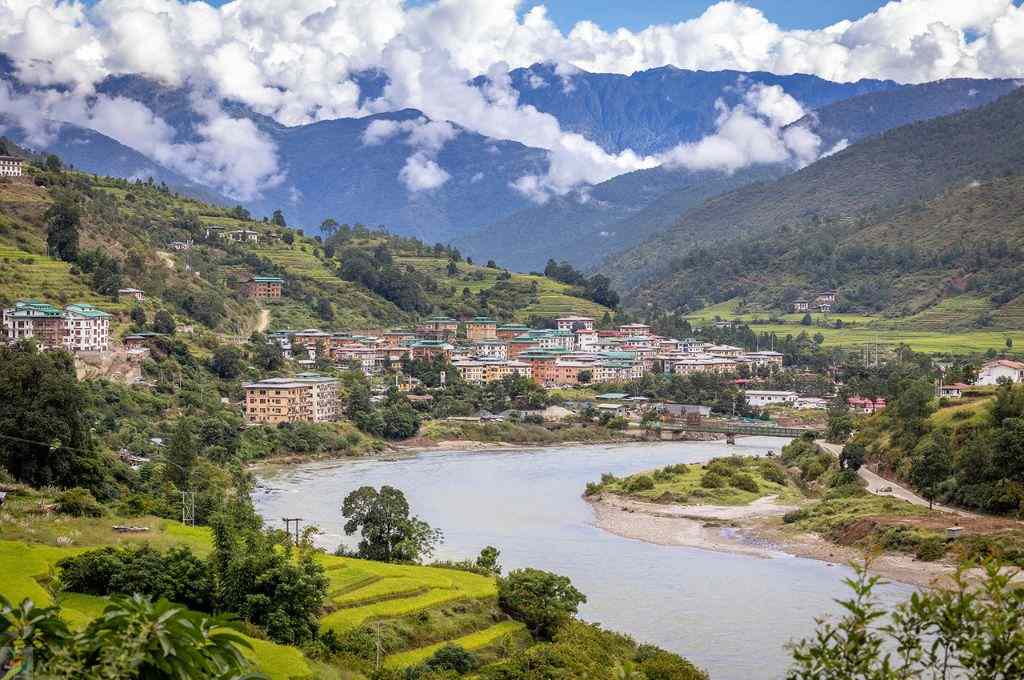
- Weather: Autumn is arguably the Bhutan best time to travel. The monsoon rains have subsided, leaving behind clear skies, dry trails, and perfect trekking conditions. Temperatures are cool but comfortable, making it ideal for outdoor activities like hiking, sightseeing, and photography.
Highlights:
- Festivals: Autumn is the peak festival season inBhutan best time to travel. The Punakha Drubchen and Punakha Tsechu, held in October, are spectacular cultural events featuring elaborate mask dances, sacred rituals, and vibrant celebrations. The Thimphu Tsechu, another major festival, takes place in October, offering a chance to experience Bhutanese cultural traditions and performances.
- Trekking and Adventure: The weather is perfect for trekking, with dry and stable conditions on popular routes such as the Jomolhari Trek and Druk Path Trek. The clear skies provide exceptional views of Bhutan best time to travel Himalayan peaks, and the natural beauty of the valleys is at its peak.
- Photography: With clear skies and vibrant autumn foliage, the landscapes are perfect for photography. The air is fresh, and the views are wide-ranging, providing amazing photo opportunities of Bhutan’s charming towns, monasteries, and mountains.
Winter (January to March): Snow-Capped Mountains and Peaceful Solitude
- Weather: Winter in Bhutan best time to travel can be cold, especially in the northern and higher altitudes, with temperatures dropping below freezing. However, the southern regions remain relatively mild, and snowfall in the mountains adds to the beauty of the landscape. The winter months offer clear skies, crisp air, and fewer crowds, making it ideal for those seeking a peaceful retreat.
- Highlights:
- Peace: Winter is the least crowded time of year in Bhutan best time to travel. This peaceful solitude provides an excellent opportunity for introspection, meditation, and personal retreats. The snow-capped mountains evoke a peaceful and almost mystical ambiance, making it an ideal setting for visitors seeking a tranquil experience.
- Wildlife Watching: The winter months are ideal for spotting rare wildlife in Bhutan. The black-necked cranes migrate to the Phobjikha Valley during this time, making it an excellent season for birdwatching and nature enthusiasts.
Festivals and Cultural Events in Bhutan
Bhutan is a country steeped in rich cultural traditions and religious practices, and its festivals are a vibrant reflection of the nation’s spiritual and social fabric. Known as Tsechus, these festivals are an essential part of Bhutanese life, offering visitors a unique opportunity to experience the country’s heritage, religion, and sense of community. Bhutan best time to travel. Each festival features elaborate dances, music, rituals, and the display of sacred religious symbols, making it an unforgettable experience for travelers.
The Paro Tsechu: Bhutan’s Grandest Festival
- When: Typically held in April
- Location: Paro Dzong (Fortress), Paro
- Highlights: The Paro Tsechu is one of Bhutan best time to travel most famous and grand festivals, drawing both locals and tourists to witness the colorful celebrations. This event is a spiritual celebration of Guru Rinpoche, the founder of Tibetan Buddhism, and it includes spectacular mask dances, Chham (ritual dances), and the unfurling of a massive thangka (a religious painting on fabric). Visitors can experience the deep religious significance of these performances, which are believed to bring blessings to those who observe them.
- Why Visit: If you want to immerse yourself in Bhutan best time to travel culture and experience the country’s spiritual heritage, the Paro Tsechu is a must-see event. The festival provides insight into the country’s Buddhist traditions and offers a chance to witness one of the most significant gatherings of the year.
The Thimphu Tsechu: A Celebration of Bhutanese Traditions
- When: Usually held in September
- Location: Tashichho Dzong, Thimphu
- Highlights: The Thimphu Tsechu is another major festival that draws visitors from around the world. Held in the capital city of Thimphu, this festival is renowned for its vibrant mask dances, music, and theatrical performances, which depict historical stories from Bhutan’s rich religious past. Bhutan best time to travel. The highlight of the festival is the unveiling of the Thongdrel, a giant thangka of Guru Rinpoche, which is displayed in the open to be blessed by the early morning light.
- Why Visit: The Thimphu Tsechu is not just about cultural performances but also about the opportunity to see Bhutanese locals dressed in traditional attire, offering a colorful and festive atmosphere. It’s a perfect festival for visitors who want to experience Bhutanese culture in the heart of the country’s capital.
Punakha Drubchen and Punakha Tsechu: A Historic and Cultural Extravaganza
- When: February or March
- Location: Punakha Dzong, Punakha
- Highlights: The Punakha Drubchen and Punakha Tsechu are two of Bhutan’s most important festivals, celebrated at the historic Punakha Dzong. The Drubchen is a religious event that commemorates the victory of Bhutan best time to travel, forces over the invading Tibetans in 1644. It is followed by the Punakha Tsechu, which includes elaborate mask dances and performances depicting religious stories. One of the most captivating features of this festival is the display of the Punakha Tsechu’s Cham dances, which are performed in the open courtyard of the dzong.
- Why Visit: This festival is unique because it not only celebrates religious and spiritual practices but also commemorates a crucial moment in Bhutanese history. The Punakha Drubchen offers visitors the chance to witness both traditional and historical performances that are deeply rooted in Bhutan’s national identity.
The Black-Necked Crane Festival: A Celebration of Nature and Conservation
- When: November
- Location: Phobjikha Valley, Wangdue Phodrang
- Highlights: The Black-Necked Crane Festival is a distinctive event that blends nature conservation with Bhutan best time to travel cultural and spiritual traditions. Held annually in the Phobjikha Valley, this festival honors the black-necked cranes that migrate to Bhutan during the winter months. The event includes a series of cultural performances, such as traditional dances and songs, along with educational programs that raise awareness about the conservation efforts of these endangered birds.
- Why Visit: The Black-Necked Crane Festival is a must-see for nature enthusiasts and birdwatchers. It provides an opportunity to learn about Bhutan best time to travel commitment to environmental protection while also celebrating the country’s cultural traditions. Visitors can witness the majestic cranes in their natural habitat and enjoy the peaceful atmosphere of the Phobjikha Valley.
Lhosar (Bhutanese New Year): A Time for Family and Community
- When: Varies (Usually in February or March)
- Location: Nationwide
- Highlights: Lhosar is Bhutan best time to travel New Year celebration, marking the beginning of the lunar year. This festival is a time for family gatherings, feasts, and prayers. Traditional dances, music, and the wearing of colorful Bhutanese attire characterize the celebration. People also visit temples to offer prayers for prosperity and well-being in the coming year. Lhosar is celebrated differently across regions, but it is always a time for joy, gratitude, and new beginnings.
- Why Visit: Visiting Bhutan best time to travel during Lhosar offers a chance to experience a deeply personal and family-oriented festival. It’s a wonderful time to witness the warmth and unity of Bhutanese communities as they come together to celebrate the start of a new year.
Other Notable Festivals
- Bumthang Festival: Celebrated in the central region, this festival offers a more intimate experience with local dances and spiritual rituals.
- Ngalung Lhosar: Celebrated by the Ngalung community in western Bhutan, this New Year festival features vibrant traditional performances and festive feasts.
- Wangdue Phodrang Tsechu: A major cultural festival held in the central region, featuring mask dances and traditional rituals.
Best Trekking Seasons in Bhutan
The ideal time for trekking in Bhutan best time to travel is during autumn (October to December) and spring (April to June). These seasons offer the best weather conditions—clear skies, moderate temperatures, and dry trails—making them perfect for long hikes and high-altitude treks. The autumn season, in particular, is popular as the monsoon rains have subsided, leaving behind lush landscapes and stunning mountain views. Spring, with its mild weather and blooming flowers, also offers scenic trekking opportunities, especially for those who enjoy being surrounded by vibrant nature.
Popular Trekking Routes in Bhutan
Bhutan best time to travel is home to some of the most scenic and rewarding treks in the Himalayas. Here are a few of the most popular trekking routes:
1. The Druk Path Trek
- Duration: 5-6 days
- Difficulty: Moderate
- Best Time to Visit: Spring and Autumn
- Overview: The Druk Path Trek is one of Bhutan’s most popular treks, taking you through stunning landscapes, dense forests, and high-altitude meadows. The trek starts in Paro and ends in Thimphu, offering trekkers the opportunity to explore Bhutan’s natural beauty and cultural heritage along the way. Bhutan best time to travel. The route includes visits to ancient monasteries and campsites with panoramic views of the Himalayas, including views of Mount Jomolhari and Mount Gangchen Ta.
- Highlights: beautiful alpine scenery, traditional Bhutanese villages, and the chance to visit remote monasteries like Jangchulakha.
2. The Jomolhari Trek
- Duration: 8-10 days
- Difficulty: Moderate to Challenging
- Best Time to Visit: Spring and Autumn
- Overview: The Jomolhari Trek is one of Bhutan’s most famous and rewarding treks, offering trekkers the opportunity to ascend to high altitudes while enjoying awe-inspiring views of Mount Jomolhari (7,314 meters), one of Bhutan’s highest peaks. Bhutan best time to travel. This trek takes you through untouched forests, lofty mountain passes, and secluded villages, where you’ll meet locals living in traditional ways. The trek also offers the opportunity to see a wide variety of wildlife, including blue sheep, takin, and even snow leopards in the higher regions.
- Highlights: Magnificent views of Jomolhari, camping at high altitudes, and stunning landscapes that change with each day of trekking.
3. The Snowman Trek
- Duration: 20-25 days
- Difficulty: Very Challenging
- Best Time to Visit: Spring and Autumn
- Overview: The Snowman Trek is one of the most difficult and rewarding treks in the world. This grueling journey takes trekkers through some of the highest and most remote regions of Bhutan best time to travel, including several passes over 4,500 meters. The trek traverses remote valleys and alpine meadows, with dramatic views of snow-capped mountains, glaciers, and pristine wilderness. The route passes through the Gasa Dzong, Laya, and Lunana, isolated communities that are only accessible on foot.
- Highlights: remote and untouched landscapes, high-altitude passes, spectacular mountain views, and the opportunity to experience life in isolated Himalayan villages.
4. The Bumthang Cultural Trek
- Duration: 4-5 days
- Difficulty: Easy to Moderate
- Best Time to Visit: Spring and Autumn
- Overview: The Bumthang Cultural Trek offers a shorter and easier alternative to Bhutan’s more challenging treks. It is ideal for those who want a less strenuous hike but still wish to experience Bhutan’s cultural and natural beauty. The trek takes you through the beautiful Bumthang Valley, visiting sacred temples, monasteries, and ancient fortress ruins. It’s a great way to experience Bhutan’s spiritual heritage while trekking through lush meadows and forests.
FAQ Section:
- When is the best time to visit Bhutan for trekking?
- Answer: The best time for trekking in Bhutan is during the spring (April to June) and autumn (September to November), when the weather is mild and the trails are clear.
- When is Bhutan’s peak tourist season?
- Answer: Bhutan’s peak tourist season is during the autumn months of September to November, when the weather is perfect for outdoor activities and festivals are in full swing.
- Are there any festivals in Bhutan that I should not miss?
- Answer: Yes, the Paro Tsechu (March-April) and Thimphu Tsechu (September) are two major cultural festivals in Bhutan, showcasing traditional dances, music, and costumes.
- Is it safe to visit Bhutan during the monsoon season?
- Answer: While Bhutan is generally safe to visit during the monsoon season (July to September), travelers should be prepared for heavy rainfall and may find some trekking routes and outdoor activities challenging.
Conclusion: The Perfect Time to Visit Bhutan
The Bhutan best time to travel depends on the experiences you’re looking for, with spring and autumn being the most favorable seasons. The months of March to May offer pleasant weather, with clear skies and blooming flowers, especially rhododendrons, making it an ideal time for trekking and outdoor activities. The temperatures are mild, and the landscape is lush and vibrant, perfect for those who want to explore Bhutan’s natural beauty and cultural heritage.
Autumn, from Bhutan best time to travel, is September to November, which is another excellent time to visit. The weather remains clear and crisp, providing stunning views of the Himalayan mountains. This is also the festival season, with events like the famous Paro Tsechu taking place, allowing visitors to experience Bhutan’s rich cultural traditions and vibrant celebrations.
Bhutan best time to travel While winter (December to February) offers quieter and colder conditions, it’s perfect for those who enjoy solitude and don’t mind cooler temperatures. The spring and autumn months, however, strike the best balance between favorable weather, cultural experiences, and outdoor exploration. Ultimately, Bhutan’s unique charm and spiritual atmosphere can be enjoyed year-round, but visiting during these seasons ensures the most pleasant and memorable experience.

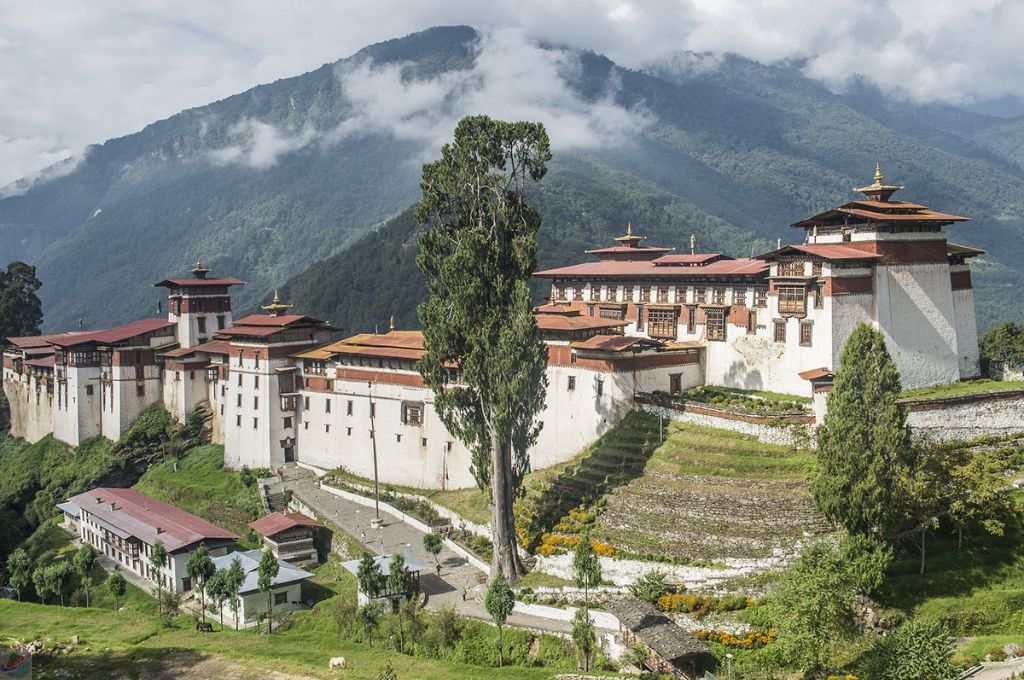
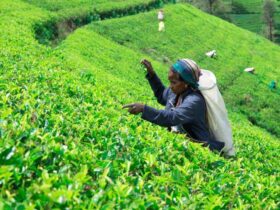
Leave a Reply